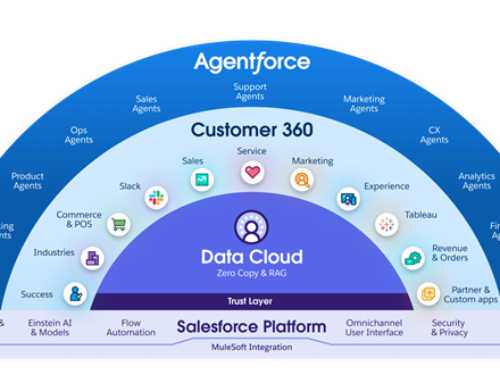This article was written Lauren Dickinson of Simmons and Simmons
When your business is stepping into international markets, it’s likely that one of the priorities will be getting the right people and teams on the ground. This will raise the question of how best to engage staff internationally.
Professional Employment Organisations
In recent years, organisations known as ‘employers of record’ (EORs) or ‘professional employment organisations’ (PEOs) have emerged. These organisations are commonly used in the U.S. but in other countries outside the U.S., there are some additional local law issues that need to be considered. PEOs offer to support international expansion by employing staff on behalf of businesses.
PEOs deal with local employment requirements, payroll tax, right to work issues, and other employment-related requirements where a business does not have a local entity. The businesses using PEOs for staffing are usually referred to as the “end-user”. Crucially, in these arrangements, the PEO is the employer and not the end-user. The end user has a commercial agreement with the PEO.
Whilst using a PEO can offer advantages for companies in some circumstances, as with any decision about the strategy for entering a new market, there are some important legal areas that companies need to consider:
- Co-employment: Even though the contractual arrangement with the PEO is that they are the employer, there is a risk that local law in the country of employment finds that the end-user is in fact the employer (either solely, or in addition to the PEO). This would mean that the end-user could be directly responsible for certain employment rights and protections which they did not expect.
- Tax: One of the attractions of using a PEO can be that it might appear to avoid the risk of creating a “permanent establishment” for tax purposes in the local jurisdiction, thereby avoiding corporation tax in that jurisdiction. End-users should however seek independent legal or tax advice on this issue as it is unlikely that a PEO arrangement eliminates the risk of a permanent establishment.
- Protecting your business: For many businesses expanding internationally, protection of confidentiality, trade secrets, and from competitive activity will be high priority. Usually, employment contracts of staff who could pose a competitive threat to the business would contain restrictions on the extent that they can compete, poach clients and staff, and use confidential information for a period of time after their departure. Whilst contracts between employees and the PEO can contain such restrictions, there are some question marks around whether these are effective to protect the end-user. If you are looking to make hires who could pose a significant competitive threat after they’ve left the business, it’s worth seeking independent advice on how to mitigate this risk.
- Protecting your intellectual property (“IP”): Your business’s intellectual property might be one of its most valuable assets, whether this is code, designs, branding, products, software, or inventions. In the UK and many other countries, IP that staff create in the course of their employment automatically belongs to their employer. This means that in a PEO arrangement, the default position is that IP created by staff belongs to their employer – this will be the PEO rather than the end-user. The most common way to deal with this is to have an assignment of IP rights in place from the PEO to the end-user and it’s important to ensure that a written assignment which covers the breadth of IP rights is in place.
- Dismissing staff: If you need to dismiss staff engaged through a PEO (whether you’re downsizing, have performance concerns, or an individual has committed misconduct), the employer of record would need to carry this out for you in line with local laws. In the UK for example, if the individual had more than two years of service then the PEO would need to have one of the statutory “fair” reasons for dismissal (such as redundancy or misconduct) and would need to follow a fair process. There is some time and effort involved to achieve a fair dismissal and in circumstances where the end user has likely provided the PEO with a full indemnity, cutting corners may be attractive for the PEO. Businesses using a PEO should keep in mind that some PEOs can be more motivated (for obvious business reasons) to push end users towards a severance agreement arrangement rather than trying to embark on a fair process which may be expeditious in many cases but is not always the right approach when it comes to risk mitigation.
- Incentives: It’s very typical for fast growth U.S companies to seek to offer shares or share options to their new hires, particularly where significant future investment rounds are anticipated but current cashflow places limitations on the level of salary that can be offered. Such arrangements would not be possible via a PEO and would need a direct arrangement between the end-user (or group company offering the shares or options) and the individual member of staff. Again, this might create a co-employment risk and tax implications, which should be considered carefully.
- Contracts with PEOs: As with any contractual arrangement, it’s important that end-users fully understand their contractual arrangement with PEOs, in particular how the PEO has sought to apportion liability for tax and litigation risk through indemnities.
Internationalisation
For companies looking to enter new markets or recruit talent in a number of countries, employers of record may offer a convenient, short-term solution. However, as with all business decisions, it’s important to fully consider all of the options and the short and long term impact of this route to market. The key alternative (and most common) option is to set up an entity in the country that you intend to engage staff and employ them directly. Combined with a third-party payroll only provider which can help with a lot of the basic set up and administration of employing staff, this can also be an attractive option. Another option to consider is engaging with contractors or consultants if it’s not a priority that your staff are working exclusively for your business although this can still create risk around tax, employment and ownership of IP. For businesses choosing to use PEOs, its fundamental to ensure that you are balancing the convenience of this option alongside protecting your assets and understanding the risks.
Lauren Dickinson is an employment law specialist at international law firm Simmons & Simmons.
About Simmons & Simmons
Simmons has launched in the US*. We’re here to supercharge our relationships with clients and networks and to connect businesses with our specialist teams across our global network of offices. Whether you need help with your existing international operations or are launching into a new market for the first time, our team can help you on your international journey.
For more information contact emily.jones@simmons-simmons.com, lauren.dickinson@simmons-simmons.com or visit www.simmons-simmons.com.
*representative office, not practicing US Law







